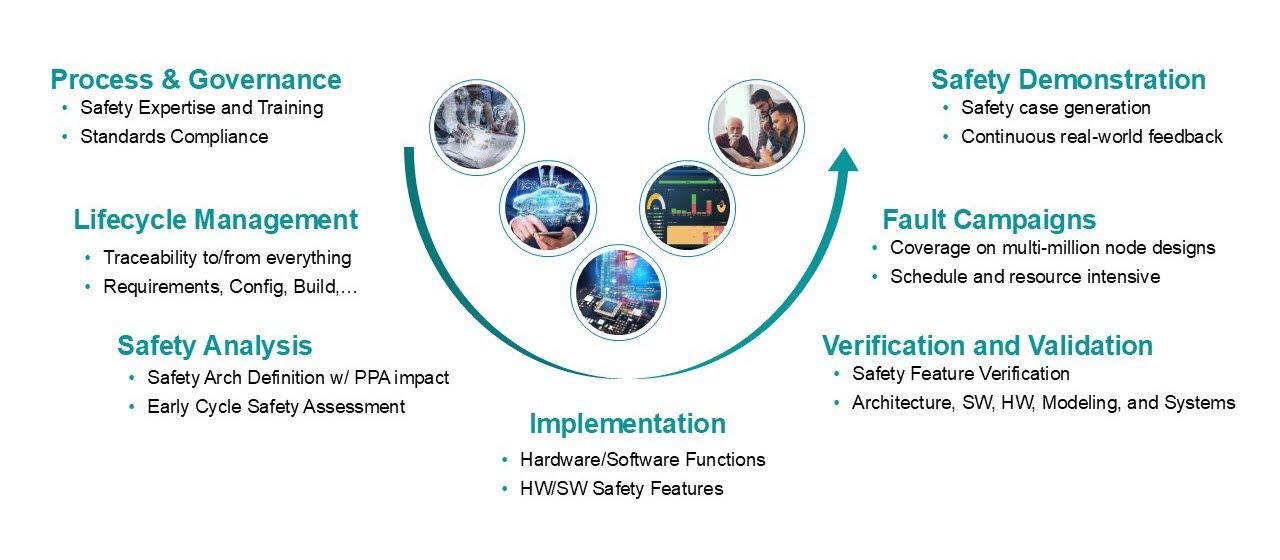Accelerated Assurance with Questa One Functional Safety
Engineering teams face many challenges in achieving compliance with the ISO 26262 safety standard. To meet these and remain competitive, project teams must innovate and deploy best-in-class tools and workflows. The Questa™ One functional safety solution delivers on this mission through an integrated platform, along with safety-aware AI-powered verification engines, to enable a more streamlined and efficient approach to ISO 26262 compliance.

-
Introduction
As electronics become increasingly integrated into daily life, the demand for safer devices has surged, particularly in the automotive sector. Modern vehicles boast advanced features, such as lane keep assistance, blind spot detection, and forward collision warnings, with many platforms aiming to achieve high levels of autonomy. At the heart of these safety systems are sophisticated semiconductor devices that manage substantial data sets while balancing stringent power requirements and intricate hardware-software dynamics. Ensuring their safe operation throughout a system’s lifecycle is crucial. Essential to this endeavor, the ISO 26262 international standard guides electrical engineering teams toward developing safe electrical and electronic systems in road vehicles.
In the realm of IC development, the ISO 26262 standard sets forth detailed development processes and strict mandates that teams must adhere to for safe product delivery. Despite the standard’s presence for several years, achieving ISO 26262 compliance remains challenging, inflating development costs, necessitating significant resources, and extending timelines. This complexity is exacerbated by the rise of AI and the transition towards software-defined vehicles.
A Reverberating Range of Requirements
The ISO 26262 standard significantly influences businesses, impacting product development, governance processes, and workforce expertise.
From a product development standpoint, teams face distinct challenges at every stage of the lifecycle. They must follow rigorous safety processes and a requirements-driven approach to deliver silicon that is both defect-free and robust against random hardware failures. This involves managing a web of interrelated tasks, such as maintaining end-to-end requirements traceability, generating and sustaining critical safety artifacts, performing detailed safety analyses, identifying potential failure modes, and architecting a safety strategy that meets automotive safety integrity level (ASIL) targets while minimizing the impact on power, performance, and area. All of these efforts ultimately converge in the creation of a comprehensive safety case, offering clear, auditable evidence of compliance throughout the engineering process.

Figure 1. High-level view of various safety activities throughout the development lifecycle.
-
Download Paper